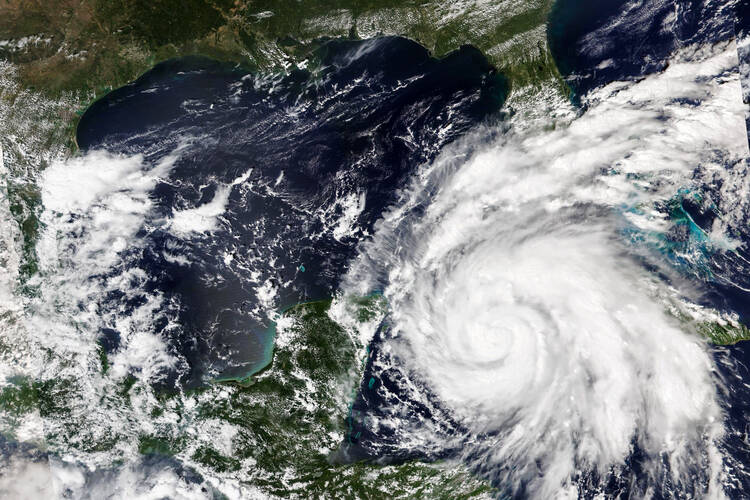One of the lesser-known facts about Genesis 1-2:4a, the story of the seven days of creation, is that it was written in response to a disaster. Judah, the southern kingdom of the Israelite people, had been invaded by Babylon. Jerusalem was destroyed, the Temple razed to the ground and much of its population scattered.
That event shook the very foundations of the people’s faith; how could they be beloved by God if they had been so completely destroyed?
In the midst of that spiritual chaos, the writer of Genesis 1 offered this story, in which God, step by step, creates every aspect of existence. The story actually begins from a place of chaos. “In the beginning when God created the heavens and the earth,” we are told, “the earth was a formless void and darkness covered the face of the deep, while a wind from God swept over the face of the waters” (Gen 1:1-2). It might sound odd to describe water as present in a “formless void,” but in the ancient Near East, water often represented chaos or even evil; it was something that could not be contained or controlled.
If he has such power, why doesn’t he stop terrible things like hurricanes and floods from happening?
In this context, to write that God was able to create light in the midst of that chaos on the first day is not just an imaginative anecdote; it’s a profession of how powerful God is. Likewise on the second day, to see God actually manipulating the waters of the void, creating a safe space for life and order within it, is intended as a bold faith-filled proclamation that God has mastery over chaos. He is its master.
God doesn’t wipe out the chaos, though, which seems puzzling and upsetting. If he has such power, why doesn’t he stop terrible things like hurricanes and floods from happening? But for the writer of that story, to have God destroy the water would be to ignore the ongoing experience of his people. They were suffering, intensely so; therefore, God clearly did not end chaos.
But the chapter goes on to describe God building our world. And as it touches every aspect of our existence, from the creation of the sun and the moon to the trees and living creatures and finally our humanity, the writer is emphasizing again and again God’s significance. God has ordered every single aspect of our creation, and all of it, to the good. Therefore, no matter what suffering the people of God were currently enduring, the writer implies, they had not been abandoned. God was exactly who they believed God to be, he was in control, and they would know rescue.
As so many struggle in the wake of Hurricane Ian, perhaps we, too, can look to Genesis 1 for help. Reading through it slowly line by line, may we draw strength from the absolute certainty of its faith.
In the beginning when God created the heavens and the earth, the earth was a formless void and darkness covered the face of the deep, while a wind from God swept over the face of the waters.
Then God said, “Let there be light”; and there was light.
And God saw that the light was good; and God separated the light from the darkness.
God called the light Day, and the darkness he called Night. And there was evening and there was morning, the first day.
And God said, “Let there be a dome in the midst of the waters, and let it separate the waters from the waters.”
So God made the dome and separated the waters that were under the dome from the waters that were above the dome.
And it was so.
God called the dome Sky. And there was evening and there was morning, the second day.
And God said, “Let the waters under the sky be gathered together into one place, and let the dry land appear.”
And it was so.
God called the dry land Earth, and the waters that were gathered together he called Seas.
And God saw that it was good.
Then God said, “Let the earth put forth vegetation: plants yielding seed, and fruit trees of every kind on earth that bear fruit with the seed in it.”
And it was so.
The earth brought forth vegetation: plants yielding seed of every kind, and trees of every kind bearing fruit with the seed in it.








